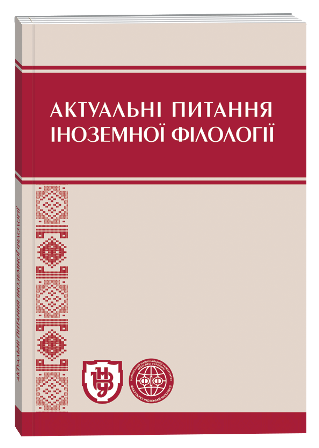БІБЛІЙНІ АЛЮЗІЇ В РОМАНІ «ОПОВІДЬ СЛУЖНИЦІ» М. ЕТВУД
Ключові слова:
антиутопія, біблійна алюзія, алюзивний потенціал, нумінозне, символізмАнотація
У статті досліджено роль і значення біблійних алюзій у творенні образної картини твору в жанрі антиутопії канадської письменниці Маргарет Етвуд «Оповідь служниці». Кожна біблійна назва, символ володіють алюзивним потенціалом, слугують вербальним знаком для конструювання розгалужених асоціативних рядів. При цьому перевага надається проблемі нумінозного, тобто окресленню інтенсивного переживання персонажами таємничого, благоговійного страху перед містичною присутністю Бога. Письменниця викриває моральне й фізичне насилля, яке спотворює людину, приводить до знищення її кращих рис характеру, до нав’язування державою стереотипів поведінки, мислення, діяльності. Авторка викриває тоталітаризм, який ґрунтується на маніпулюванні людською свідомістю, психікою, віруваннями. Саме тому роман постає як застереження людству: остерігатися тих, які використовуватимуть сокровенне, сакральне в корисливих, ганебних інтересах. Досліджено зумовленість жанром антиутопії ідейної настанови, композиції та стилю твору, проаналізовано органічність художньої дійсності роману та її залежність від рівня естетичних смаків, світобачення письменниці. З’ясовано відмінні ознаки антиутопії, представлені письменницею: відсутність виразного протагоніста, який протистоїть системі, відсутність чіткої розв’язки, яка викликала б функцію катарсису в читача. Розкрито проблему суспільної ролі жінки, де вона виконує лише визначені їй функції. Письменниця засуджує страждання, викликані чітко регламентованими умовами життя, повторюваністю ритуалів й апелює до читацького обурення таким станом речей. Авторка наголошує на пасивній ролі оповідача-персонажа і загалом усіх мешканців країни. З’ясовано причини популярності твору: жанр антиутопії, синтез масового та елітарного, інтертекстуальність, символіка ритуалів і кольорів. Відкритість твору на подієвому рівні актуалізує читацький горизонт, спонукає до роздумів.
Посилання
Atwood, Margaret. 2016. The Handmaids Tale. London: Penguin Random House.
Booker, M. Keith.1994. The Dystopian Impulse in Modern Literature: Fiction as Social Criticism. Westport, Connecticut: Greenwood Press.
Chwalkowski, Farrin. 2016. Symbols in Arts, Religion and Culture: The Soul of Nature. Cambridge: Cambridge Scholars Publishing.
Holy Bible, New International Version. 2011. Biblica, Inc.
Interview. Margaret Atwood: There’s nothing in the book that hasn’t аlready happened. Quill & Quire 51.9 (Sept. 1985):66–67.
Vorontsova M. Yu. 2005. “Svoyeridnist romanistyky Margaret Atwood”. PhD diss., Dnipro National University.
Otto, Rudolf. 2008. Svyashchennoye. Ob irratsionalnom v ideye bozhestvennogo i ego sootnoshenii s ratsionalnym. Sankt-Peterburg : Izdatelstvo SPbGU.
Parkhomenko, Inna. 2011. “Relihiyni syuzhety v romani M. Atwood «Rozpovid Sluzhnytsi»”. Pytannya literaturoznavstva. Chernivtsi. 82:80–86.
Timeychuk, Iryna. M. 2013. “Bibliyni alyuziyi u romani-dystopiyi M. Atwood «Istoriya sluzhnytsi»”. Literatura v konteksti kultury. Dnipro. 23(2):126–136.
Fray, Northrop. 2010. Velykyy kod: Bibliya i literatura. Ttranslated by Iryna Starovoyt. Lviv: Litopys.







